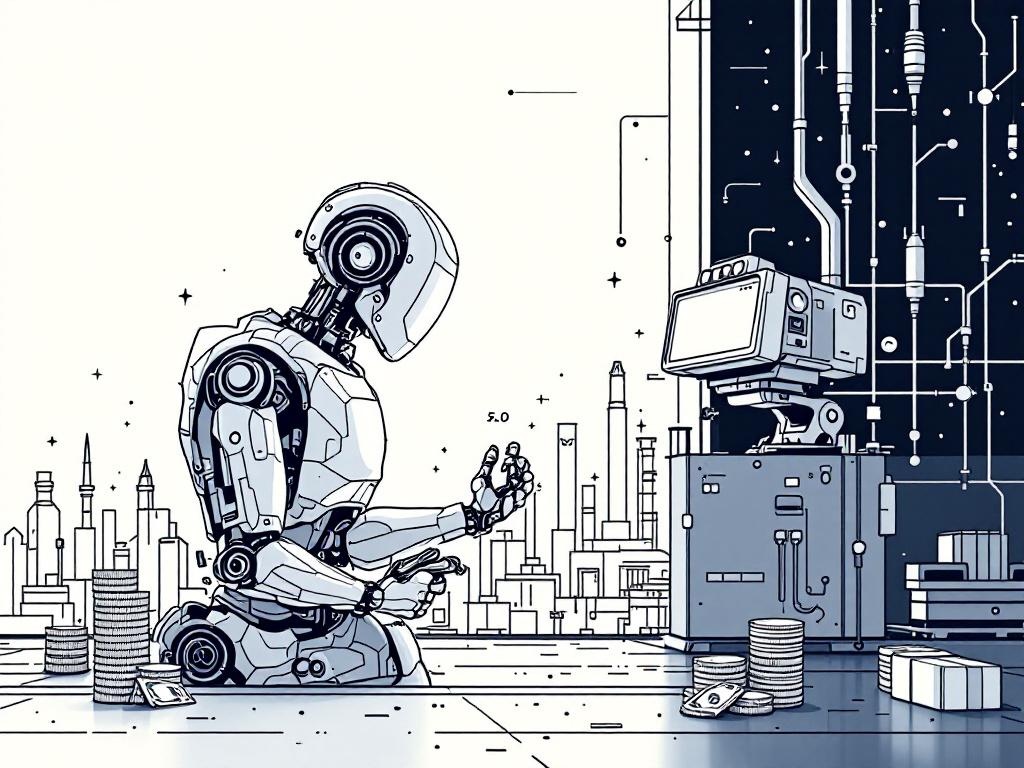Industry 5.0: The Next Frontier in Manufacturing Innovation

New York, Tuesday, 8 July 2025.
Projected to grow at a CAGR of 17.3%, Industry 5.0 integrates AI and autonomous systems, transforming manufacturing into a human-machine collaborative space by 2032.
The Rise of Human-Machine Collaboration
Industry 5.0 is a transformative paradigm looking to reshape the economics of manufacturing by 2032, with an anticipated market value reaching $637.4 billion from a base of $129.05 billion in 2022. This growth is driven by a CAGR of 17.3% over the period from 2023 to 2032. Unlike Industry 4.0, which primarily focused on the automation of processes, Industry 5.0 emphasizes human-centric collaboration, integrating human intelligence and creativity with advanced technologies such as AI and robotics [1]. This shift is creating a landscape where humans and machines work synergistically, enhancing productivity and fostering innovation within smart factories [1].
Economic Impacts and Technological Integration
The economic implications are profound as manufacturers invest heavily in upgrading infrastructure for Industry 5.0 compliance. Notably, the increased focus on predictive maintenance and real-time monitoring through digital twins minimizes downtime and creates cost efficiencies [1]. Several regions, including Asia-Pacific, particularly China, are spearheading this growth with a projected CAGR of 18.5%, driven by robust technological adoption and governmental support [1]. Additionally, the global collaboration robot market, strongly tied to Industry 5.0 innovations, is also expanding. It is anticipated to reach $18,454.1 million by 2032, enabling more efficient material handling and assembly processes [2].
Unprecedented Manufacturing Opportunities
As we navigate towards a technologically vibrant future, Industry 5.0 presents new opportunities for innovators and entrepreneurs in the manufacturing sector. Companies are seen adopting collaborative robots (cobots), integrating both AI and IoT to enhance production lines, particularly in the automotive and electronics industries [1]. German automakers like Audi are already leveraging these cobotic systems, combining Automated Guided Vehicles (AGVs) with lightweight robots to streamline operations and improve production efficiencies [2]. This technological shift not only promises increased productivity but also opens avenues for creative problem-solving and customization in manufacturing practices [3].
Preparing for the Industry 5.0 Era
In preparing for the Industry 5.0 revolution, businesses must prioritize strategic investments in technology that enable seamless human-machine collaboration. The integration of cobots and digital solutions is imperative for those wanting to maintain a competitive edge. The manufacturing segment dominates Industry 5.0, benefiting significantly from these innovations, and is projected to have the highest growth within this market. Overall, understanding and leveraging these advancements is crucial for dictating the direction of future manufacturing practices and ensuring sustainable economic growth across sectors [1][2].